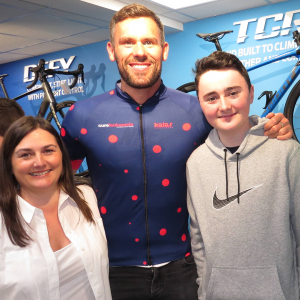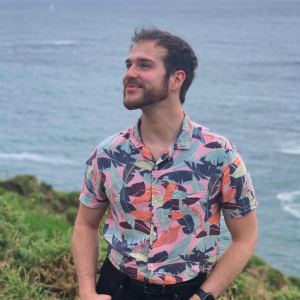
Harrison Price
"The family are so proud of Harry." Read Harry Price's story
Acute lymphoblastic leukaemia (ALL) is a cancer of the bone marrow and it comes about because some of the very early blood making cells in the bone marrow called stem cells have developed a cancer potential, and they grow very quickly in the bone marrow and replace healthy blood making.
Patients present with ALL because the bone marrow, the healthy blood making system isn’t working normally and so they often present with symptoms of anaemia, bruising, tiredness, and their blood counts are very low, their healthy blood making is very, very low and it’s because the bone marrow has been replaced by these abnormal leukaemia cells called ALL cells.
We don’t entirely know why acute leukaemia happens, but we do know some of the events that have happened in the bone marrow are because of changes in the genes in the blood making system that seem to trigger the leukaemic event. And we use that information to help guide us with treatment.
ALL is the most common form of leukemia that’s seen in childhood and it’s one of the most common childhood cancers, but we also see it steadily in teenagers, young adults and in older adults too.
People usually have symptoms for quite a short duration, maybe just a few weeks before they’re diagnosed with ALL. These symptoms could be:
ALL is a very rapid onset disease. Usually, people develop symptoms that need treatment and they present to a doctor within days to weeks of becoming unwell.
Treatment depends very much on the age and the fitness and the other medical problems that a patient might have. In general, childhood, teenage and young adults with ALL are treated with drugs called chemotherapy. Chemotherapy is a term for any drug which can kill a cancer cell, and usually this is administered intravenously using a drip and as an inpatient. Chemotherapy is used to kill the leukaemia cells to let the healthy bone marrow recover and that first phase of chemotherapy may take a few weeks as an inpatient in hospital with the goal to get patients into what we call remission, which is where the blood counts go back to normal.
The majority of patients will be treated with chemotherapy but some may require a bone marrow transplant or CAR T-cell therapy. With a bone marrow transplant you have a new blood system given to you after chemotherapy from a healthy individual whose immune system matches yours. This replaces your immune and blood system completely and can cure you off your leukaemia.
CAR T-cell therapy also uses the immune system to kill the leukaemia, but instead it takes a patient’s own white cells and re-engineers them to become T-cells that can kill leukaemia. This is a very exciting technology and there have been some highly effective responses in patients in the preliminary trials of CAR T-cell therapy.
The common side effects from treating ALL are that the bone marrow of patients gets very low, and they need to have regular transfusions of blood products to stop them feeling anaemic and tired. Patients can be transfused platelets, which are clotting cells because they can be at risk of bruising and bleeding and one of the most common side effects of chemotherapy is that their own healthy immunity to infections becomes very, very low.
Most patients going through chemotherapy for acute leukemia at some stage will have infection and need strong antibiotics and that’s the reason why, particularly in the early stages of chemotherapy, patients need to be in the hospital environment as an inpatient. It’s a very, very long course of treatment and, inevitably, it will have a huge impact on the lives of patients.
Clinicians are focused on the goal of getting the disease into remission and to cure the leukaemia meaning that patients can get back into normal routines as quickly as possible.
If you look at the prognosis and if you look at the survival for ALL, it has been absolutely transformed by clinical trials. The prognosis for childhood, teenage and young adults with ALL has transformed since the 1960’s and 1970’s when this was a very, very difficult disease to treat.
Now we expect to cure the majority of children and young adults with this disease through chemotherapy and that’s a very significant change. Decade on decade, treatments have got better and better, and it’s because of clinical trials which look at the best treatments in the world and then question how can we make them better? What adjustments need to be made?

'We must stop luck being the deciding factor.' Read Jaymz Goodman's story
Notifications